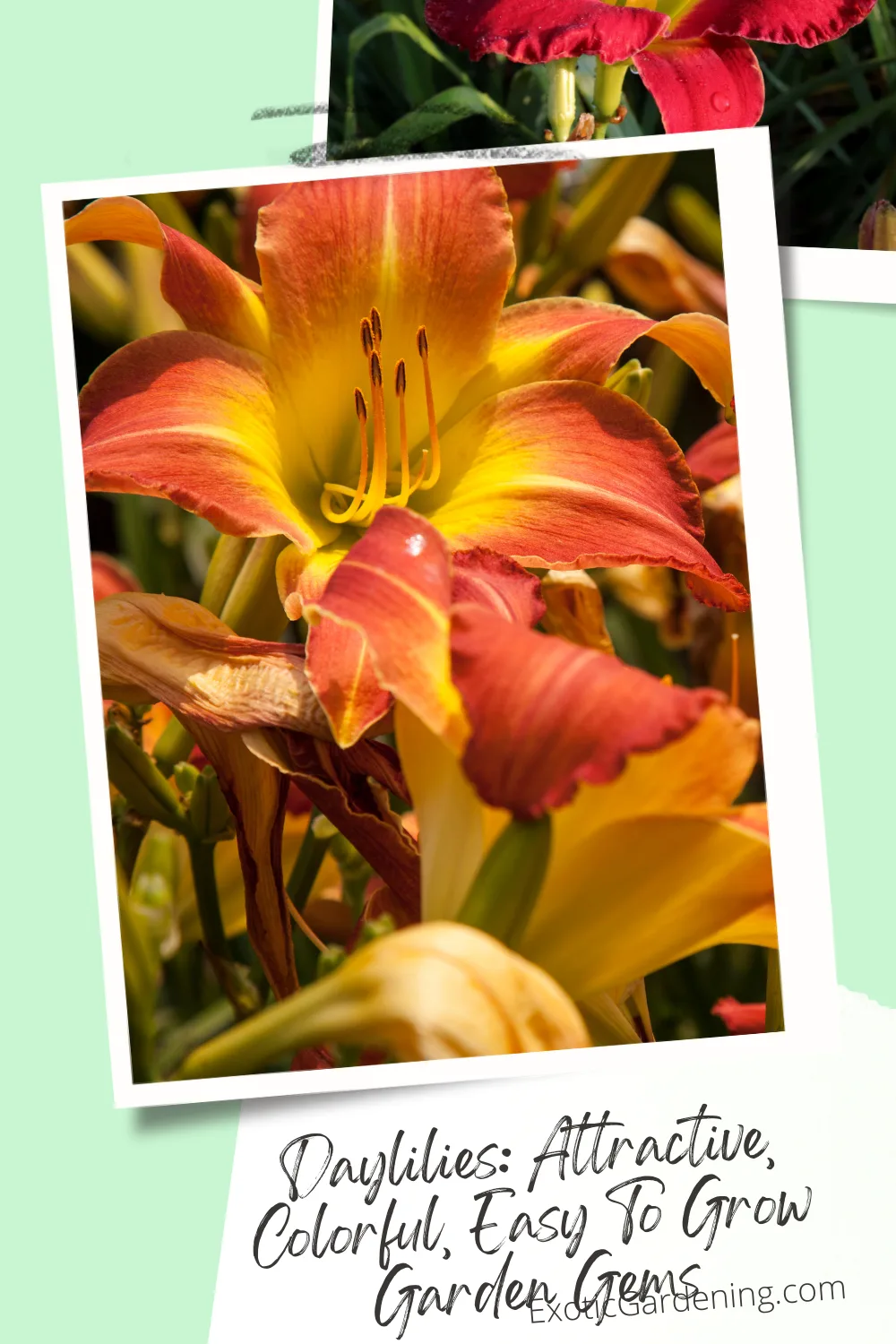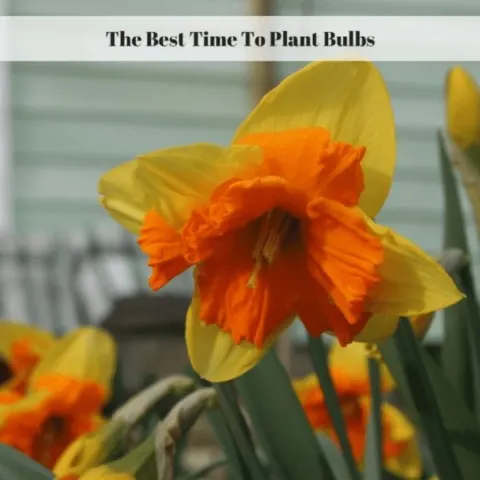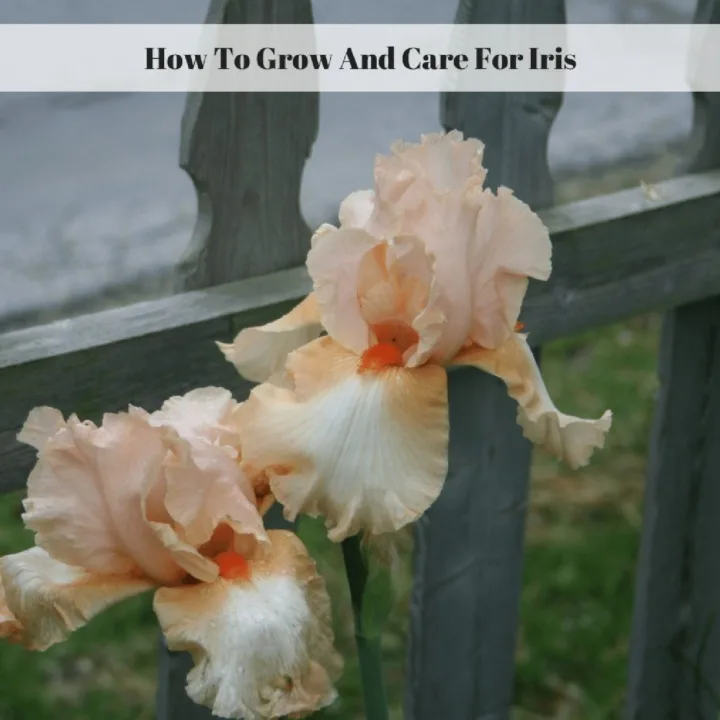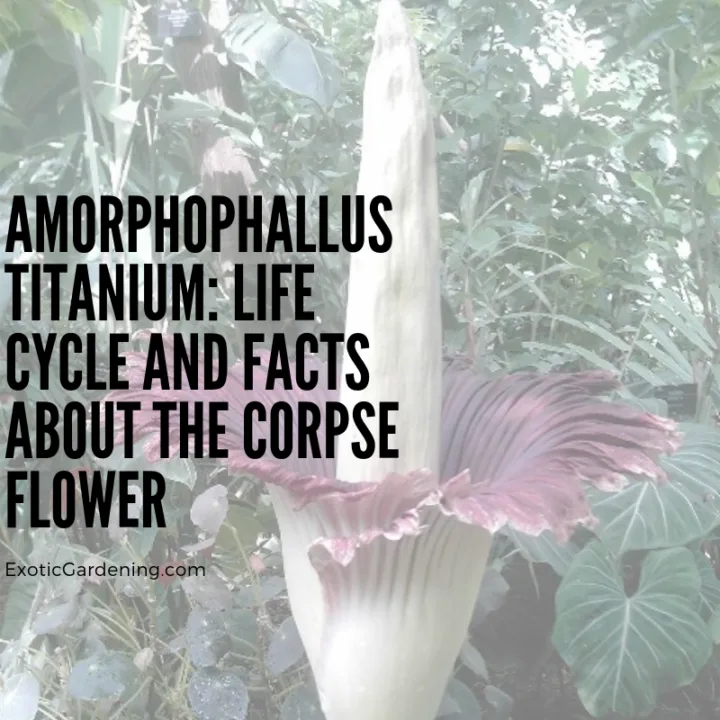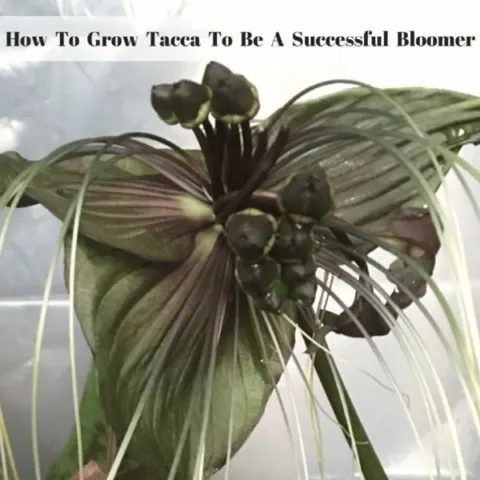When many people think of daylilies, they think of the orange ditch lilies you see growing on the side of the road.
While these may be the most common summer flowering bulbs that are seen, hybridizing has produced an unbelievable array of colors, including many that are bi-color.
Other interesting color combinations include stippled, polychrome, edged and blended.
You can choose daylilies - botanically known as Hemerocallis, that have markings such as eyed, banded, halos and watermarks to name just a few.

Daylily Scent, Shape And Bloom Time
Many daylilies now offer a wide range of fragrances not to mention a choice between single and double blooms.
The size of the blooms can also vary extensively.
Some are two to three inches in diameter while others can be as large as five inches across.
There is quite a range in sizes, including some dwarf varieties.
The shape of the flower is another option that is now available.
From the typical trumpet shape to flat, recurved, star, triangular and circular there is a shape that will please everyone.
The double varieties are available in a double hose-in-hose, a double peony and a ruffled shape.
With additional advances in bloom times, it is possible to make them the mainstay of your garden from May through September.
Daylilies have become one of the most popular perennials in today’s gardens and rightly so.
Explanation Of Common Markings On Daylilies
Daylilies that have markings referred to as eyed have a dark contrasting blotch at the base of the petals and sepals.
A watermark is quite similar to an eye with the exception being that the blotch on the base of the petals and sepals is lighter than the background color.
The edged flowers are properly named because the edges of the petals are a different color or shade than the rest of the flower.
However, if the edging is found only on the tips of the petals, it is known as tipped.
Wire edging is another term commonly heard concerning markings on daylilies.
This refers to a narrow line around the edges of the petals and sepals in a contrasting color to the flower's background color.
The most sought after edging right now in the tetraploid daylily is the gold-edge.
Ones such as ‘Ida’s Magic,’ ‘Wedding Band,’ and ‘Admiral’s Braid’ are quite popular.
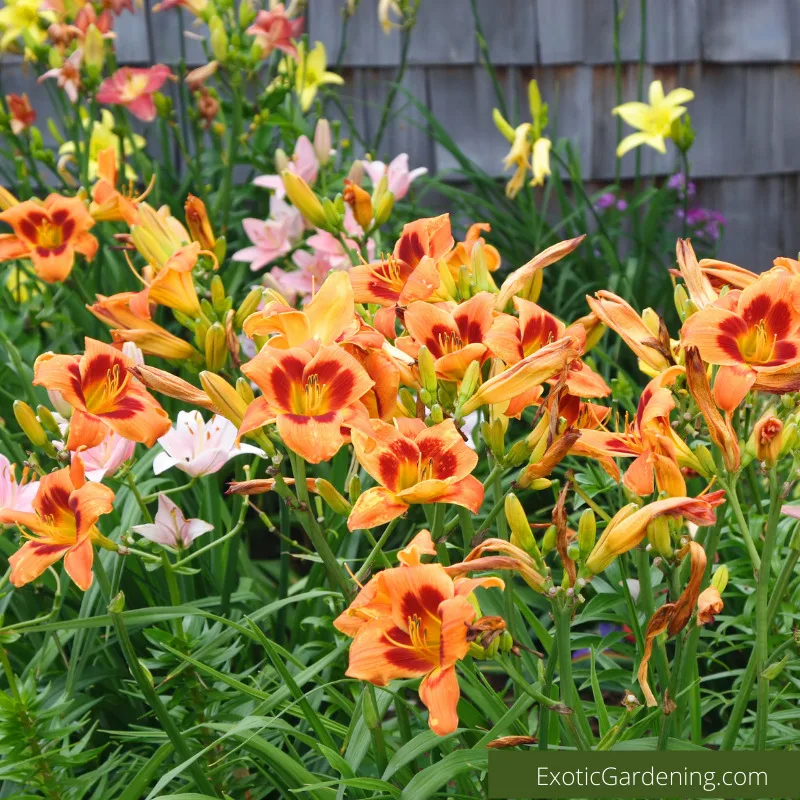
Interesting Facts About Daylilies
The name Hemerocallis means “beautiful for a day.”
While it is a commonly known fact that the individual flowers only last for a day, the flower stems bear quantities of buds that will continue to open for extended periods of time.
A little known fact about daylilies is that there is a night blooming variety, Hemerocallis thunbergi.
I have found this variety available through a nursery this year although it is one that has been around for well over twenty years.
Of course there are other varieties of daylilies now that are also night blooming.
Prices can range from ten dollars up to at least one hundred fifty dollars depending on the variety you choose.
The newer the plant is the more expensive it will it be.
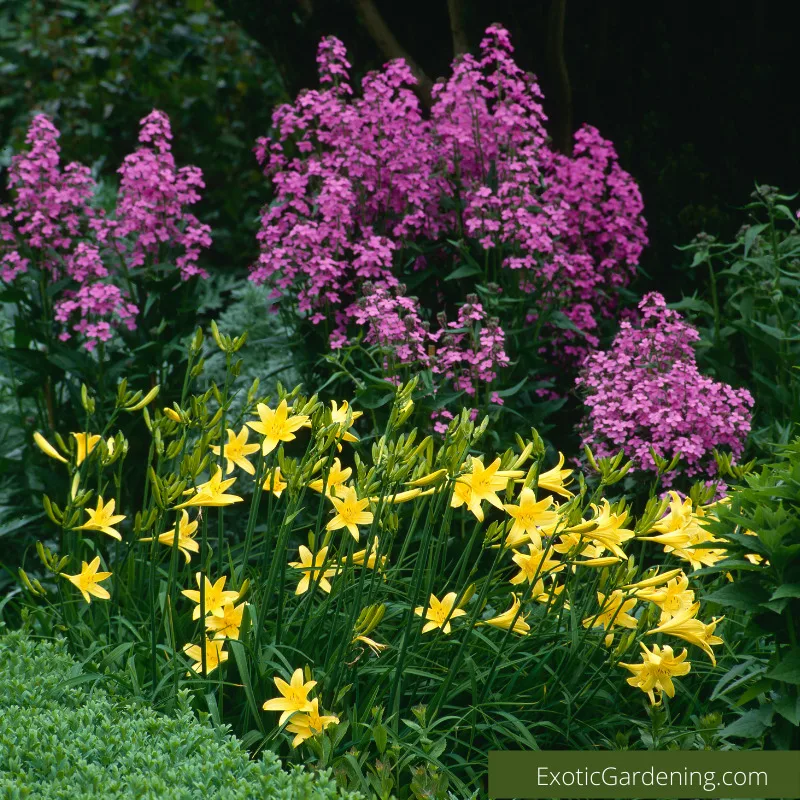
Incorporating Daylilies Into Your Landscape
Not only do daylilies make great borders for around the bases of trees, but they also work well as shrub borders or as a background for low-growing perennials.
They can tolerate a wide range of conditions from extremely damp soil to dry soil.
They will grow in full sun or full shade.
Another plus of growing daylilies is that they are drought tolerant and seldom attacked by pests or diseases.
Daylilies can tolerate a wide range of growing conditions as mentioned above and once established are extremely care-free.
Adding a top dressing that consists of well-composed manure in the spring and fall will improve the bloom quality.
Daylily Propagation Techniques
Daylilies are easily propagated by division in either the early spring or fall.
One plant can make up to fifteen new plants within one year’s time.
It is extremely important for the health of your plant that you do divide your plants every two to three years as needed.
It is best to completely dig the plant up, shake the soil off and then use a sharp knife to cut the fans apart.
If you do not divide your plants periodically the clumps will produce fewer blooms that most likely will be of inferior quality.
Once the plants are divided and ready to be replanted, you should cut the foliage down to one-third of the original size.
This technique will prevent loss of moisture through the leaves while the plant is generating a good root system.
When you replant your daylilies, be sure to cover the crown with about one inch of soil.
Provided you are extremely patient and don’t mind waiting for two to three years to see the fruits of your work, daylilies can be fairly easily propagated from seeds.
This is generally the method used when hybridizing new varieties.
However, do be prepared to wait at least two to three years to before you will see your first bloom.

Bulbs and Rhizomes
Dive into the fascinating world of bulbs and rhizomes with our curated collection of blog posts! Whether you're a seasoned gardener or just starting your journey, you'll find everything you need to plan, plant, and care for these stunning plants. From classic spring favorites like tulips and daffodils to summer showstoppers like gladiolus and cannas, our posts cover a wide variety of blooms to suit any garden style.
Learn how to choose the best bulbs and rhizomes for your region, plant them at the right time, and care for them season after season. With expert tips on soil preparation, watering, and pest resistance, you’ll be equipped to create a garden that’s vibrant and thriving.
Explore the endless possibilities and let these versatile plants bring bursts of color and texture to your garden year-round. Start planning your dream garden today!
Worselya rayneri Culture And Propagation
Learn how to grow, flower and propagate the endangered plant, commonly known as the Empress Of Brazil, Worseyla rayneri.
How To Grow Amaryllis
Learn how to grow Amaryllis from seed as well as how to care for your Amaryllis plant indoors and what to do with it after flowering.
Bulbs to Plant In January: Get a Head Start on Cut Flower Production
Plant bulbs in January in a heated greenhouse to get a head start on cut flower production. Then interplant herbs, vegetables and annuals.
Spring Flowering Bulbs: The Cutting Garden
Plant spring flowering bulbs in the greenhouse or even indoors in February and March for gorgeous blooms in spring or mid-summer.
Forcing Bulbs Indoors For Early Spring Blooms
Forcing bulbs indoors is a great way for those without greenhouses to have flowers in bloom during the winter months.
Blooming Brilliance: Mastering Spring-Flowering Bulbs in Hot Climates
Discover the secrets of coaxing bulbs to bloom in hot climates. Get expert tips for vibrant, resilient floral displays.
Brighten Your Garden This Spring With Miniature Daffodils
Brighten your garden this spring with miniature daffodils! Discover their vibrant colors, unique varieties, and easy-care charm.
How To Grow And Care For The Albuca Species
Learn how to grow and care for the Albuca species. While most people start with a live plant, seed starting information is also included.


